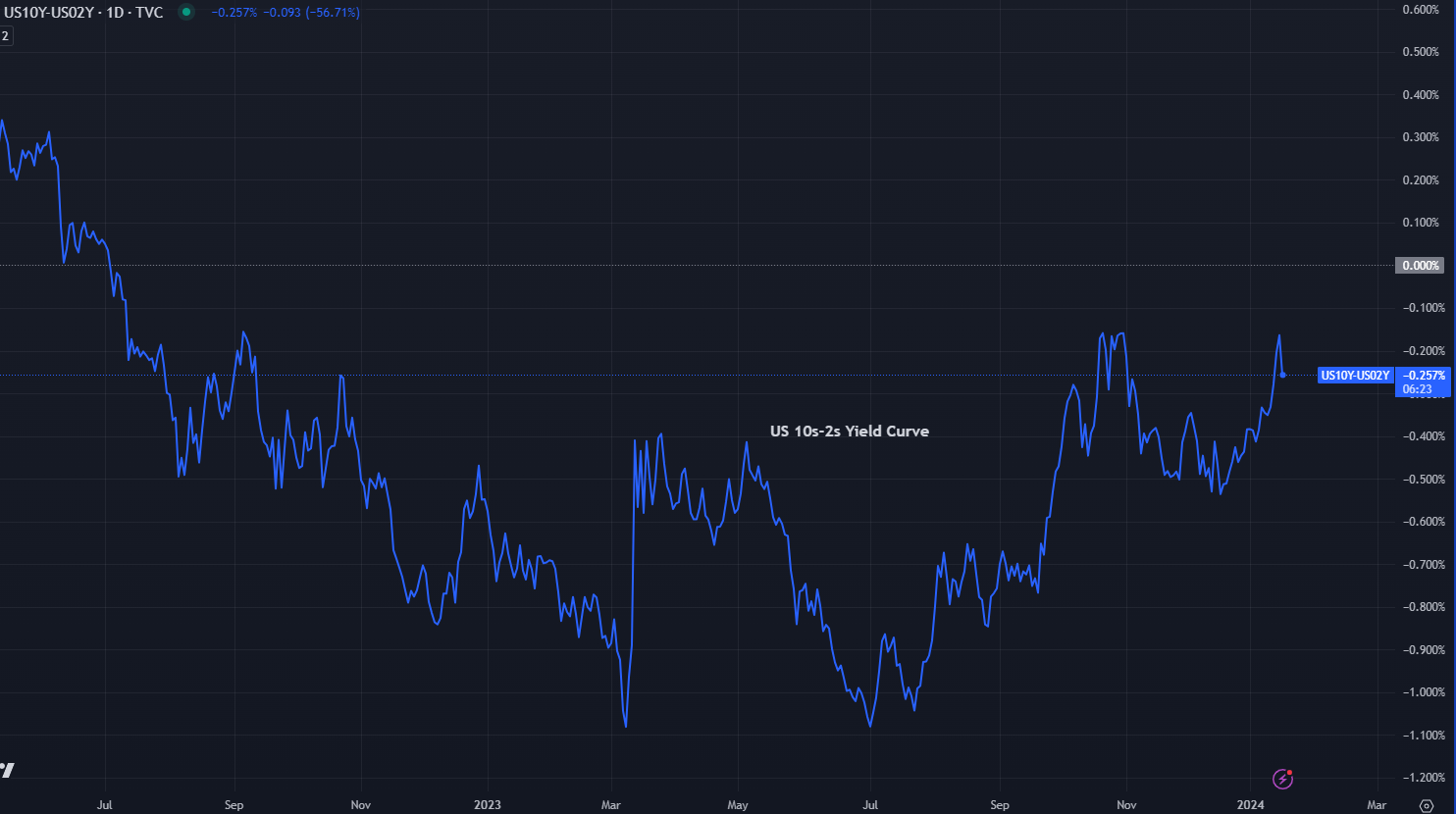US Treasury yields hit five-week high amid adjusted Fed rate cut expectations
- U.S. November Nonfarm Payrolls: What Does the Rare "Weak Jobs, Strong Economy" Mix Mean for U.S. Equities?
- Tesla Stock Hits Record High as Robotaxi Tests Ignite Market. Why Is Goldman Sachs Pouring Cold Water on Tesla?
- U.S. November CPI: How Will Inflation Fluctuations Transmit to US Stocks? Tariffs Are the Key!
- AUD/USD remains depressed below mid-0.6600s; downside seems limited ahead of US NFP report
- December Santa Claus Rally: New highs in sight for US and European stocks?
- When is the BoJ rate decision and how could it affect USD/JPY?

10-year Treasury note yields climb to 4.129%, and 30-year bonds reach 4.344%, reflecting investors' alignment with the Fed's cautious policy outlook.
Positive US Retail Sales and Industrial Production data contribute to rising bond yields and slight gains in the USD, currently at 103.38.
Fed Governor Waller's emphasis on a methodical approach to easing monetary policy prompts market recalibration, reducing bets on aggressive rate cuts.
US Treasury yields across the yield curve climbed to five-week highs as the 10-year note rose to 4.129%, while the 30-year bond jumped as high as 4.344%, on investors adhering to the US Federal Reserve (Fed) “higher for longer” mantra. Consequently, that sponsored a leg-up in the Greenback (USD) though pared some of its gain, clings to minuscule gains of 0.05%, at 103.38.
Investors adopt the “higher-for-longer” mantra as US 2-year yields skyrocketed
Traders during the US session witnessed the release of US Retail Sales for December, which saw an increase of 0.6%, surpassing both the forecasted rise of 0.4% and the figures from November. Later, the US Federal Reserve reported a modest improvement in Industrial Production, which grew by 0.1%. This marks a positive shift after a period of contraction and stagnation in October and November of the previous year.
In addition to that, earlier data revealed during the European session revealed that the UK’s inflation exceeded forecasts, sparking a jump in global bond yields.
At the beginning of the week, investors were expecting 175 basis points of rate cuts by the Fed in 2024. But throughout the session, they adjusted their bets, and now expect 145 basis points of monetary easing, which means they trimmed one rate cut.
On Tuesday, Federal Reserve Governor Christopher Waller said the Fed is not in a hurry to ease its monetary policy, as inflation is "within striking distance" of their target. While he is open to the idea of reducing interest rates, Waller cautioned that any such policy changes need to be "carefully calibrated and not rushed," emphasizing the importance of waiting until the risks of inflation reigniting have significantly diminished.
The US 10-year Treasury note climbed four basis points, up to 4.106%, while the 30-year bond rose five basis points toward 4.344%, before retreating to 4.323%. Meanwhile, the diversion of the US 10s-2s yield curve, halted, as the 2-year Treasury note climbed 13 basis points of expectations that the Fed would remain reluctant to easy policy as the markets expected.
Ahead of the week, the US economic docket will feature US Initial Jobless Claims, and further Fed speakers will cross the wires on Thursday, followed by Friday’s University of Michigan (UoM) Consumer Sentiment.

US 10s-2s Spread Chart, Source: TradingView.
Read more
* The content presented above, whether from a third party or not, is considered as general advice only. This article should not be construed as containing investment advice, investment recommendations, an offer of or solicitation for any transactions in financial instruments.

